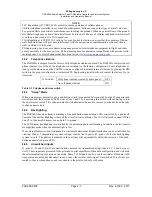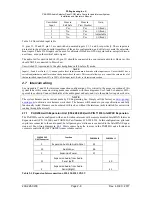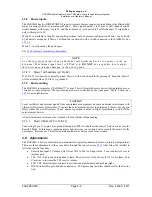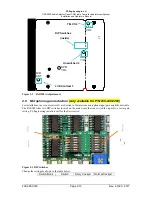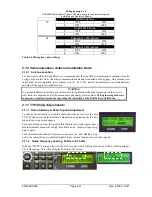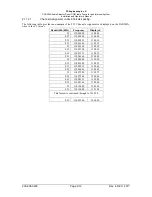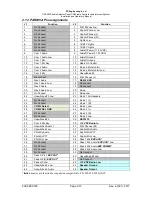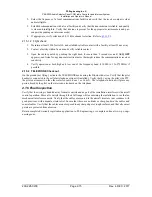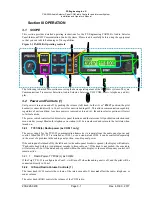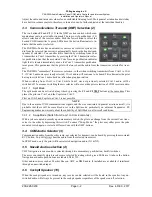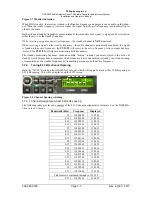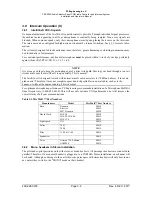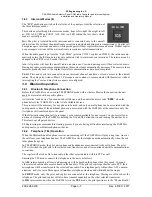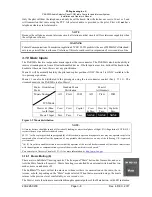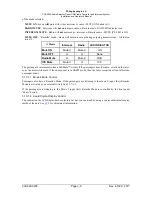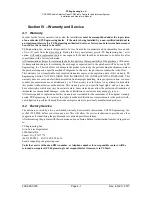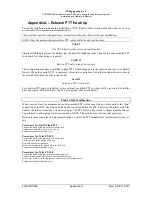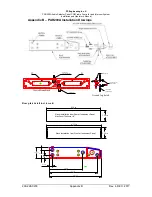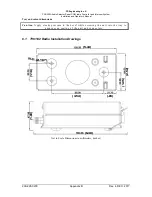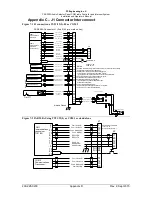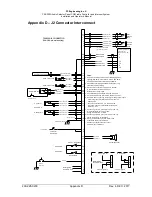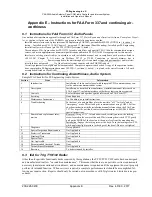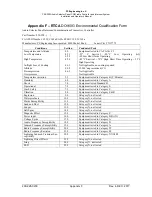
PS Engineering Inc. ®
PAR200A Audio Selector Panel, COM radio Controller and Intercom System
Installation and Operator’s Manual
200-228-0200
Page 3-6
Rev. 4, DEC. 2017
3.8 Intercom Operation (8)
3.8.1
IntelliVox® VOX-Squelch
No manual adjustment of the
IntelliVox
® squelch control is possible. Through individual signal processors,
the ambient noise appearing in all four microphones is constantly being sampled. Non-voice signals are
blocked. When someone speaks, only their microphone circuit opens, placing their voice on the intercom.
The intercom can be configured for high noise environment by internal switching. See §
2.9
for more infor-
mation.
The system is designed to block continuous tones; therefore, people humming or whistling in monotone may
be blocked after a few moments.
For consistent performance, any headset microphone
must
be placed within ¼-inch of your lips, preferably
against them. (Ref:
RTCA/DO-214, 1.3.1.1 (a
)).
NOTE
It is also a good idea to keep the microphone out of a direct wind path. Moving your head through a vent air
stream may cause the
IntelliVox
® to open briefly. This is normal.
The
IntelliVox
® is designed to work with normal aircraft cabin noise levels (70 dB and above). It loves air-
plane noise! Therefore, it may not recognize speech and clip syllables in a quiet cabin, such as in the
hangar, or without the engine running. This is normal.
For optimum microphone performance, PS Engineering recommends installation of a Microphone Muff Kit
from Oregon Aero (1-800-888-6910). This will not only optimize VOX performance, but will improve the
overall clarity of
all
your communications.
Table 3-1 Mic Muff ™ Part Numbers
Manufacturer
Model
Mic Muff™ Part Number
Bose
Dynamic
Electret
M87 Dynamic
90010
90015
90020
David Clark
H10-30
H10-20, H10-40
H10-13.4
90010
90015
90015
Lightspeed
All
90015
Peltor
7003
7004
90010
90015
Pilot
11-20 & 11-90
90015
Sennheiser
90015
Telex
Airman 750, Echelon
AIR3000
90015
90010
3.8.2
Mono headsets in Stereo Installation
The pilot and copilot positions work with stereo or mono headsets. All passenger headsets are connected in
parallel. Therefore, if a monaural headset is plugged in to a PAR200A Stereo installation, one channel will
be shorted. Although no damage to the unit will occur, passengers with stereo headsets will only hear in one
ear, unless they switch to the “MONO” mode on their headset.

